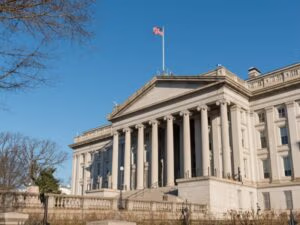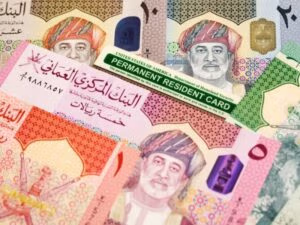The Federal Reserve is expected to leave its key interest rate unchanged this week, holding steady amid intense pressure from President Donald Trump and other administration figures calling for rate cuts.
Trump demands cuts, but inflation still above target
Trump and Treasury Secretary Scott Bessent argue that inflation has cooled enough to justify lower rates and spur economic growth. They point to falling gas prices and a slowdown in some categories of consumer prices. “There is ‘NO INFLATION,’” Trump claimed Friday on Truth Social.
But the data tells a more mixed story. While gas prices have dropped 10% from a year ago, grocery prices have continued climbing — rising 0.5% in two of the past three months, and 2.4% over the past year. The Fed’s preferred inflation measure showed a 3.6% increase in the first quarter, still well above the central bank’s 2% target.
Fed walks tightrope between inflation and growth
After a rapid series of rate hikes in 2022 and 2023 to tame pandemic-era inflation, the Fed is now carefully watching how Trump’s new tariffs may influence prices and economic growth. Chair Jerome Powell has warned that tariffs could temporarily raise inflation — or potentially lead to more persistent increases.
“That’s a Fed that is going to have to wait for evidence and be slow to adjust on that evidence,” said Vincent Reinhart, chief economist at BNY.
The Fed’s decision to keep rates at about 4.3% reflects its desire to avoid premature moves — especially given the political spotlight and complex economic backdrop.
Political pressure complicates rate-cut timeline
In recent weeks, Trump has publicly criticized Powell and floated the idea of removing him, though he later walked back that suggestion. Still, the political tension complicates the Fed’s independence and credibility.
“You could imagine a world where there isn’t pressure from the Trump administration and they cut rates … sooner,” said Preston Mui, an economist at Employ America.
Powell himself has acknowledged the challenge of balancing inflation risks with economic uncertainty, particularly with tariffs in play. “It could also be more persistent,” he said recently, referring to the potential inflationary effects of trade policy.
Musk adds fuel to the fire over Fed spending
Elon Musk, now leading Trump’s Department of Government Efficiency, added another layer to the criticism last week by questioning the Fed’s $2.5 billion renovation project in Washington, D.C. “We should certainly look to see if indeed the Federal Reserve is spending $2.5 billion on their interior designer,” Musk said.
Fed officials defended the costs, noting inflation in construction materials and labor, as well as city zoning rules that required more expensive underground expansion.
Uncertain outlook for rate cuts
While some investors believe a rate cut could happen by July, most economists expect the Fed to wait until at least September — unless tariffs hit the job market hard. “The Fed’s current wounds are largely self-inflicted,” said former Fed governor Kevin Warsh, who is seen as a potential successor to Powell.
For now, Powell insists the Fed’s independence is intact: “Fed independence is very widely understood and supported in Washington, in Congress, where it really matters.”






